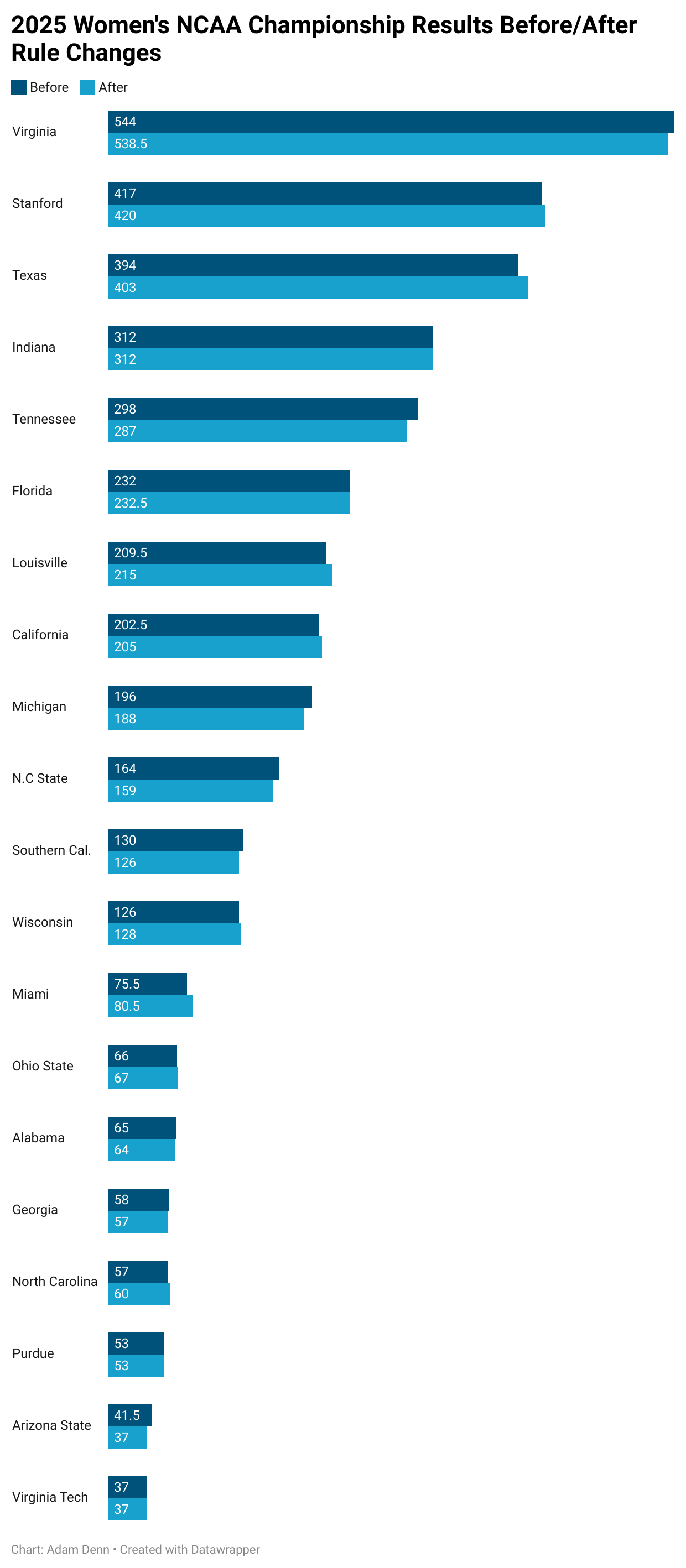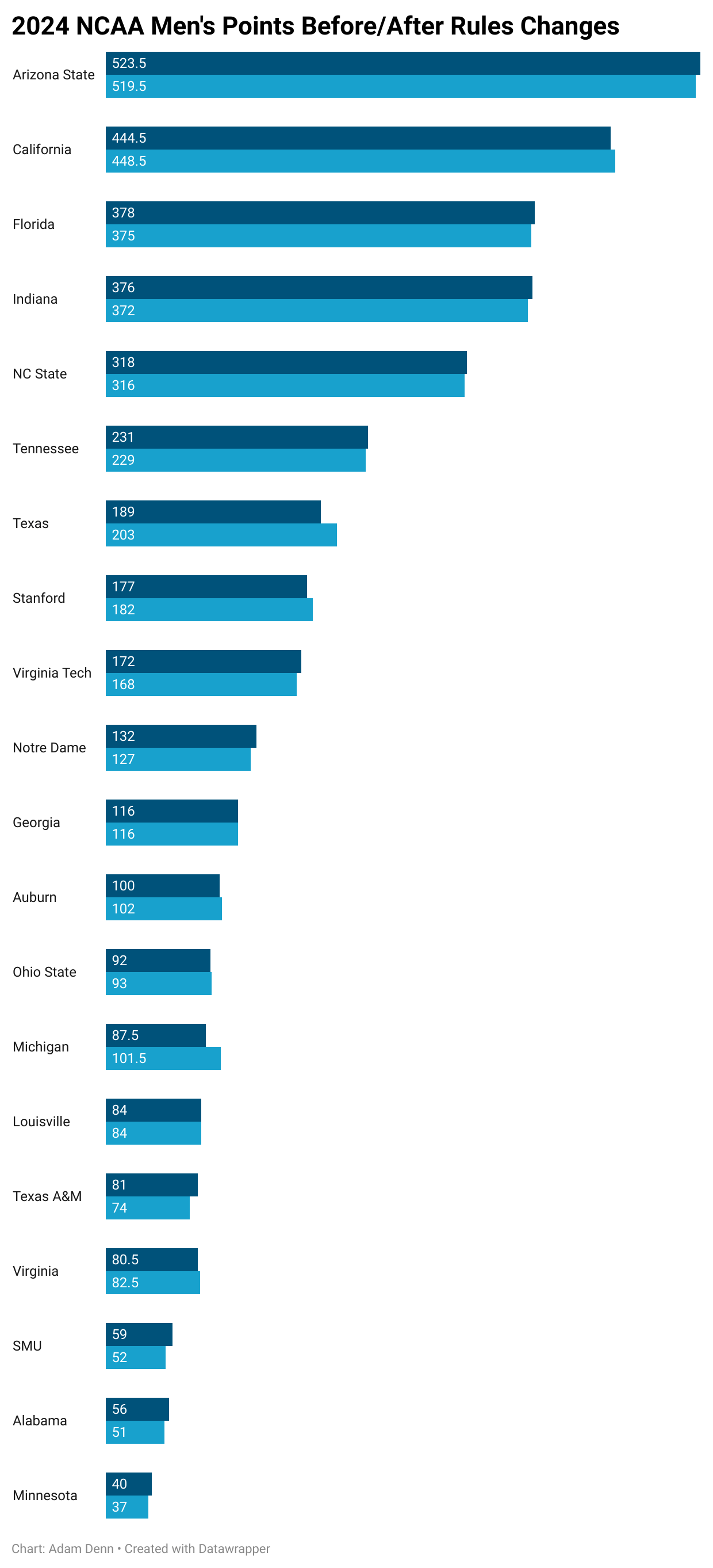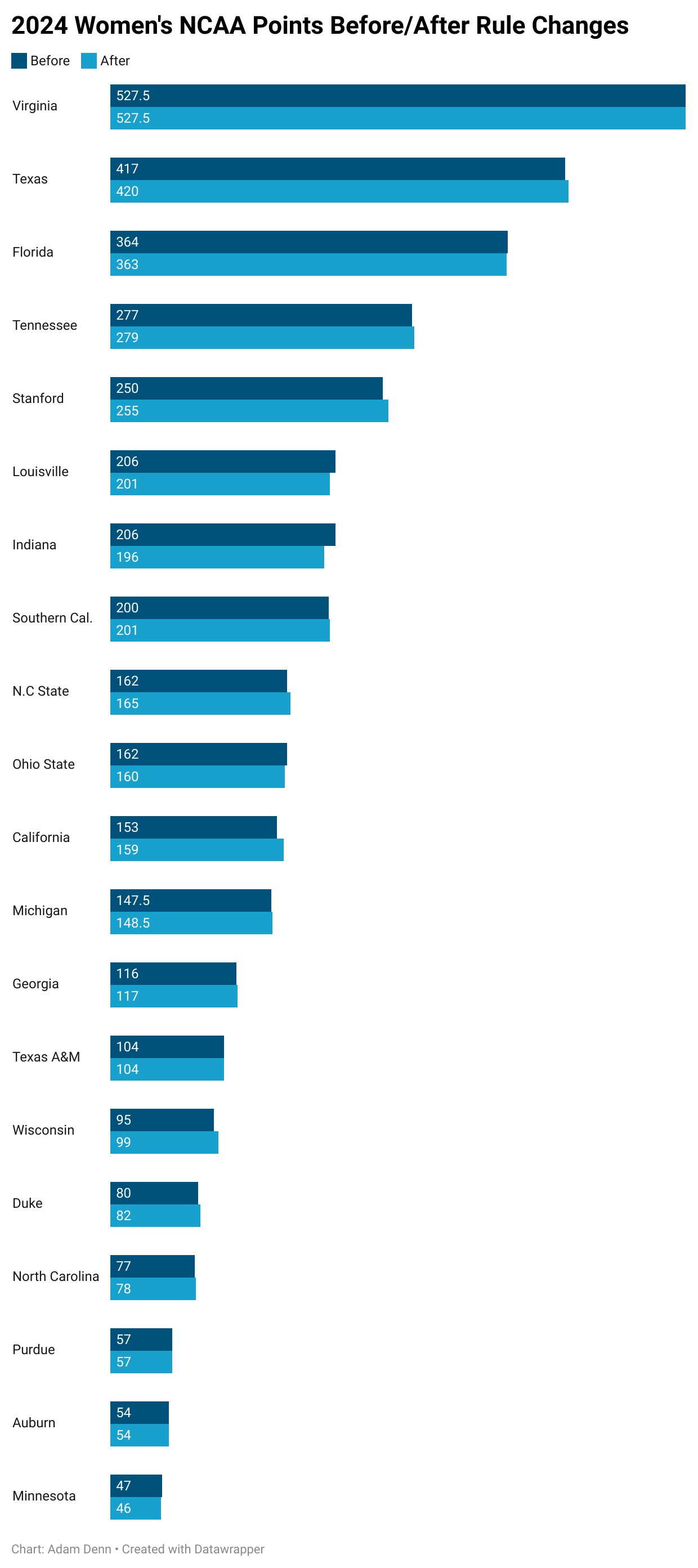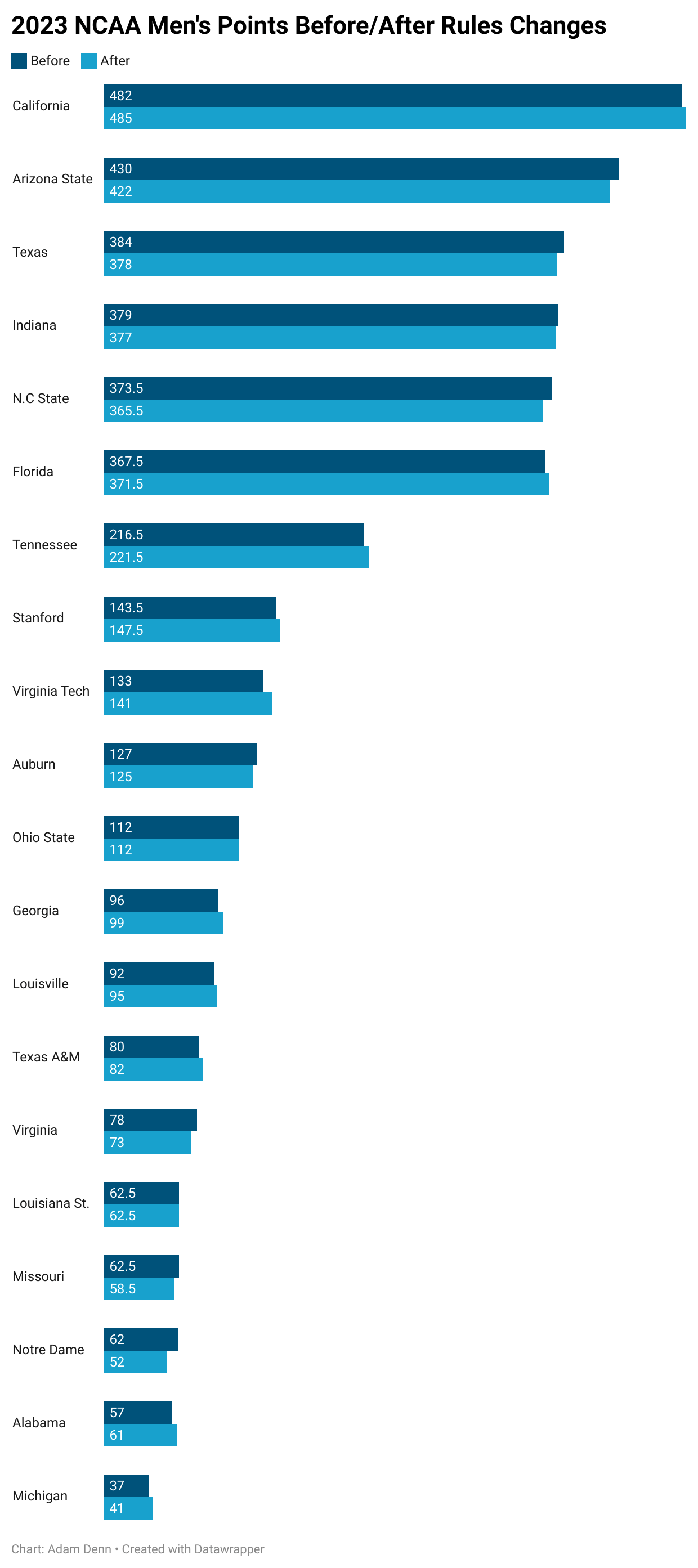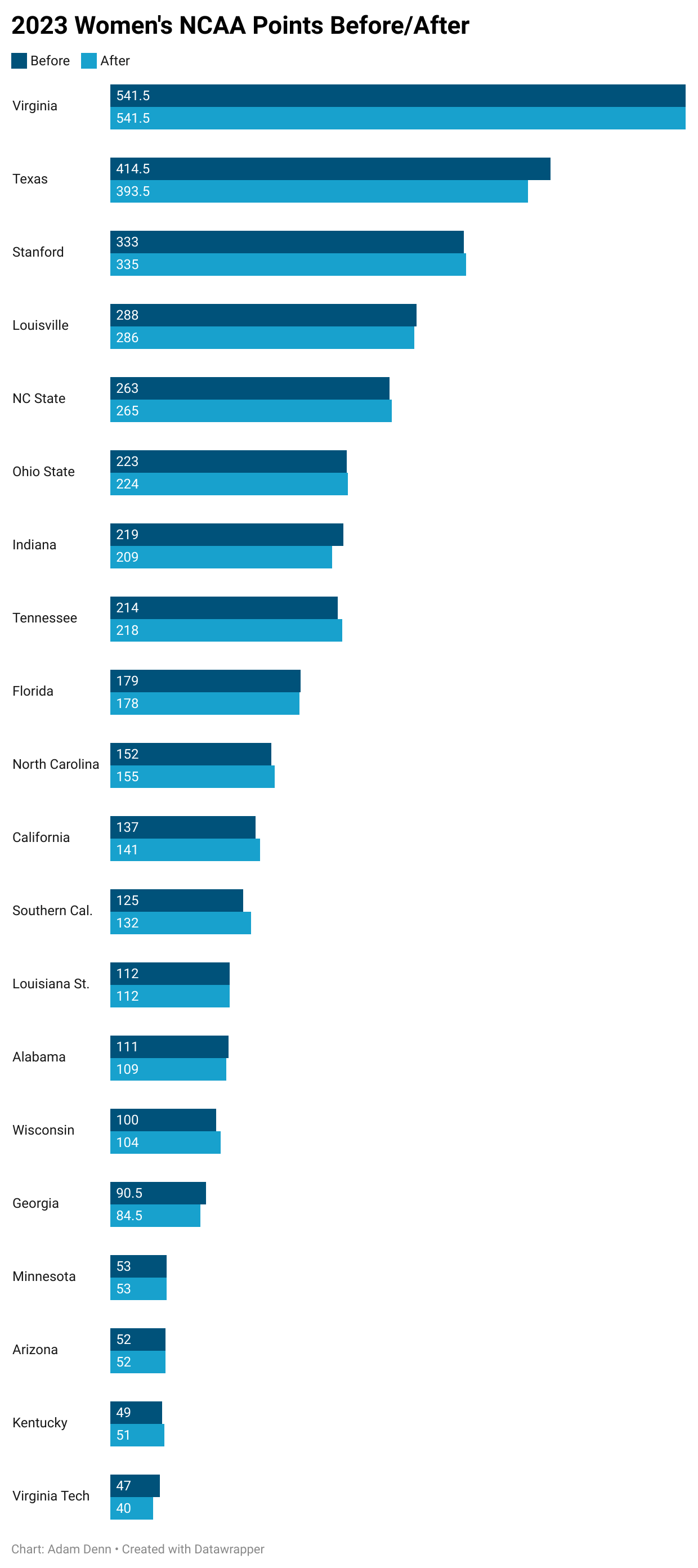How Much Will the New NCAA Championships Format Affect Meet Results?
How can college swimming become more marketable?
It’s a question that’s been tossed around for years. Well, after much debate, the NCAA and College Swimming Coaches Association of America believe they have found a solution, through the new championship format that was recently announced. The impending changes, designed to streamline sessions, will go into effect at the 2026 NCAA Championships.
It’s clear the changes were devised to make the meets more appealing from an entertainment perspective. But a large question looms: How will the changes affect the meet from a competitive perspective? The removal of consolation finals at night, which means ninth through 16th-place scoring will be determined based on prelims results, could impact championship results.
To see what kind of effect the new format might have, we analyzed the results – men and women – from the last three years of NCAA Championships. The meets were scored using both the old and new championship formats. The results tell a complex narrative.
Little Change At the Top – With a Big Exception
The greatest concern of many NCAA Swimming fans seems to be how the new changes could impact who wins the meet. However, after scoring the six championship meets from 2023-2025, there wasn’t any change in recent years. Virginia still won all three women’s titles, while Cal, Arizona State and Texas would still have prevailed on the men’s side.
In addition to no change in which programs actually would have won the meet, the podium also remained similar. In five of the past six NCAA Championship meets, the top three teams remained the same after factoring in the upcoming changes. The only outlier was this the 2025 NCAA Men’s Championships. With the new rules, Indiana would have topped Cal for second place at this year’s meet, with 480 points to Cal’s 474.5 points.
This scenario would have been quite the upset, given Cal’s dominance as a championship or runnerup program for more than a decade. Indiana gained 21 points from the new format, which was the most of any team across the three years.
Changes in the Middle
While the NCAA’s best remained generally unaffected, the same could not be said farther down the standings. The difference between teams placing between 25th and 30th often comes down to a few points. This scenario makes the loss of consolation finals more impactful. Not having an opportunity to gain more points at night, and relying on prelims placement, could affect how a team finishes. Obviously, then, athletest best not leave anything in the pool during the morning session.
Some teams across the years analyzed would have placed better without consolation finals at night. For example, the USC women would have placed higher in both 2023 and 2024, going from 22nd to 20th in ‘23 and eighth to seventh in 2024. On the other hand, some teams benefited greatly from swimming at night. For example, the Texas A&M men would have placed 16th rather than 18th in 2024 without a consolation final.
What’s the True Impact?
This new format affected some teams. However, the research as a whole showed the new format to have a minimal impact. Most teams, with a few exceptions, improved or dropped by very few points, with mainly no change in where they placed at the meet. Even if the championship meet looks different, it’ll still likely be the same competition at heart.
Here’s a look at the past three years of NCAA Championships and how the new format would have affected scoring:
